Interphase Power Flow Control via Single-Phase Elements in Distribution Systems
Abstract
:1. Introduction
2. Interphase Power Flow via Single-Phase Element
2.1. Interphase Power Flow
- Complex, active, and reactive power absorption through each terminal: , , , , , ,
- Total power absorbed by the single-phase element: , and ,
- The difference in the power absorption between two terminals: , , and . Positive indicates that the absorbed power on terminal a is higher than terminal b, i.e., , or .
2.2. Constant Current Load
2.3. Constant Power Load
- The first component, N represents the fundamental power distribution of a single-phase load. It shows that power is drawn equally from both terminals. This component can be considered the base power flow that does not involve IPPR.
- The second component, U involves a factor u, which describes how a voltage magnitude unbalance causes an IPPR and an uneven power distribution in the base power flow described above. The power is drawn more from the terminal with the higher voltage magnitude.
- The last component, R describes an IPPR as a result of the presence of the opposite power quantity in a single-phase load. In particular, the real power consumption of a load () routes interphase reactive power of from the lagging phase to the leading phase terminal. On the other hand, the reactive power consumption of a load () routes an interphase real power of from the leading phase to the lagging phase terminal.
2.4. Constant Impedance Load
2.5. Line-to-Neutral Load
2.6. Delta-Wye Transformer
3. Interphase Power Flow Control
3.1. Line-to-Line Static Var Compensator (SVC)
3.2. Line-to-Line Power Electronic Interface
3.2.1. Phase Lock Loop (PLL)
3.2.2. Interphase Power Flow Control Loop
- determines the active power transfer between the DC side and AC side. An inappropriate setting of would result in the increase and decrease of the DC link voltage.
- determines the total reactive power absorption which may be dispatched from a centralized controller.
- and relate to real and reactive power routing control.
- , , and may be selected for precise real and reactive power absorption at the terminal.
- In the first operating mode in which the set point of and are given, and should be selected as the control parameters. When is small, the real power should be roughly equally distributed between the two phases.
- In the second mode, power electronic interfaces are utilized for ancillary services such as IPPF control or precise power absorption or injection. In this mode, two power quantities of IPPF can be selected for control. To control active and reactive IPPR, or can be selected. For controlling the precise power injection at a connected terminal, , , and can be selected. However, neither and , nor and should be chosen simultaneously. After the control parameters have been determined, the corresponding and to achieve the desired ancillary service can be calculated by using Equation (11). Those values should be limited within the inverter power rating. Moreover, the AC-DC active power balance should be enforced to ensure stable DC link voltage.
3.2.3. Current Control Loop
3.2.4. Voltage Control Loop
4. Simulation and Verification
4.1. Multimicrogrid System Simulation
4.1.1. System Description
4.1.2. Interphase Power Flow Control
- At 0.4 s, 10 kW from PV3 (on phase B) is routed to charge ES3 (phase C). Additionally, the steady state active and reactive powers are provided entirely by the devices in the microgrid, making MC2 self-sufficient. The active and reactive power flow required for achieving this power routing can be calculated using the approximate IPPF model (12). The theoretical power flow at the delta-wye transformer is as shown in Figure 11.
- At 0.6 s, 10 kW from PV2 in MC3 (phase C) is routed to charge ES2 in MC1 (on phase B-C). ES2 injects 17.3 kvar so that the active power is drawn solely from phase C.
- At 0.8 s, 10 kW from PV3 in MC2 (phase B) and 10 kW from PV1 in MC1 (phase A-B) are routed to charge ES1 in MC1 (phase A). The total reactive power required for IPPF control can be calculated using (12). The reactive power burden for IPPF control can be distributed evenly among the PVs, requiring 17.3 kvar from each.
4.1.3. Result
4.2. Distribution Feeder Simulation
4.2.1. System Detail
4.2.2. Interphase Power Flow Control
4.2.3. Simulation Results
5. Conclusions
Author Contributions
Funding
Institutional Review Board Statement
Informed Consent Statement
Data Availability Statement
Conflicts of Interest
Abbreviations
| DER | Distributed energy resource |
| DSRF | Double synchronous reference frame |
| DSTATCOM | Distribution static compensator |
| ES | Energy storage |
| FACT | Flexible alternating current transmission system |
| IPPF | Interphase power flow |
| IPPR | Interphase power routing |
| MC | Microgrid |
| P | Active power |
| PLL | Phase lock loop |
| PV | Photovoltaic |
| Q | Reactive power |
| S | Complex power |
| SOGI-QSG | Second-order-general integrator quadrature signal generator |
| SVC | Static var compensator |
References
- Chembe, D. Reduction of power losses using phase load balancing method in power networks. In Proceedings of the World Congress on Engineering and Computer Science (WCECS), San Francisco, CA, USA, 20–22 October 2009; pp. 492–497. [Google Scholar]
- Sahito, A.; Memon, Z.; Shaikh, P.; Ahmed Rajper, A.; Memon, S. Unbalanced loading; An overlooked contributor to power losses in HESCO. Sindh Univ. Res. J. Sci. Ser. 2016, 47, 779–782. [Google Scholar]
- Ghosh, A.; Joshi, A. A new approach to load balancing and power factor correction in power distribution system. IEEE Trans. Power Deliv. 2000, 15, 417–422. [Google Scholar] [CrossRef]
- Czarnecki, L.S.; Haley, P.M. Unbalanced power in four-wire systems and its reactive compensation. IEEE Trans. Power Deliv. 2015, 30, 53–63. [Google Scholar] [CrossRef]
- Quintela, F.; Arévalo, J.; Redondo, R.; Melchor, N. Four-wire three-phase load balancing with Static VAr Compensators. Int. J. Electr. Power Energy Syst. 2011, 33, 562–568. [Google Scholar] [CrossRef]
- Jiang, I.H.; Nam, G.; Chang, H.; Nassif, S.R.; Hayes, J. Smart grid load balancing techniques via simultaneous switch/tie-line/wire configurations. In Proceedings of the IEEE/ACM International Conference on Computer-Aided Design (ICCAD), San Jose, CA, USA, 3–6 November 2014; pp. 382–388. [Google Scholar]
- Haq, S.U.; Arif, B.; Khan, A.; Ahmed, J. Automatic three phase load balancing system by ssing fast switching relay in three phase distribution system. In Proceedings of the 1st International Conference on Power, Energy and Smart Grid (ICPESG), Mirpur, Pakistan, 12–13 April 2018; pp. 1–6. [Google Scholar]
- Chang, T.H.; Lee, T.E.; Lin, C.H. Distribution network reconfiguration for load balancing with a colored petri net algorithm. In Proceedings of the 2017 ICASI, Sapporo, Japan, 13–17 May 2017; pp. 1040–1043. [Google Scholar]
- Mayordomo, J.G.; Izzeddine, M.; Asensi, R. Load and voltage balancing in harmonic power flows by means of Static VAr Compensators. IEEE Trans. Power Deliv. 2002, 17, 761–769. [Google Scholar] [CrossRef]
- Mishra, M.K.; Ghosh, A.; Joshi, A.; Suryawanshi, H.M. A novel method of load compensation under unbalanced and distorted voltages. IEEE Trans Power Deliv. 2007, 22, 288–295. [Google Scholar] [CrossRef] [Green Version]
- Singh, B.; Solanki, J. A comparison of control algorithms for DSTATCOM. IEEE Trans. Ind. Electron. 2009, 56, 2738–2745. [Google Scholar] [CrossRef]
- Arya, S.R.; Singh, B.; Niwas, R.; Chandra, A.; Al-Haddad, K. Power quality enhancement using DSTATCOM in distributed power generation system. IEEE Trans. Ind. Appl. 2016, 52, 5203–5212. [Google Scholar] [CrossRef]
- Chang, W.; Liao, C.; Wang, P. Unbalanced load dompensation in three-phase power system with a current-regulared dstatcom based on multilevel converter. J. Mar. Sci. Technol. 2016, 24, 484–492. [Google Scholar]
- Tenti, P.; Trombetti, D.; Tedeschi, E.; Mattavelli, P. Compensation of load unbalance, reactive power and harmonic distortion by cooperative operation of distributed compensators. In Proceedings of the 2009 13th European Conference on Power Electronics and Applications, Barcelona, Spain, 8–10 September 2009; pp. 1–10. [Google Scholar]
- Mousazadeh Mousavi, S.Y.; Jalilian, A.; Savaghebi, M.; Guerrero, J.M. Flexible compensation of voltage and current unbalance and harmonics in microgrids. Energies 2017, 10, 1568. [Google Scholar] [CrossRef]
- El-Naggar, A.; Erlich, I. Control approach of three-phase grid connected PV inverters for voltage unbalance mitigation in low-voltage distribution grids. IET Renew. Power Gener. 2016, 10, 1577–1586. [Google Scholar] [CrossRef]
- Hong, T.; de León, F. Controlling non-synchronous microgrids for load balancing of radial distribution systems. IEEE Trans. Smart Grid 2017, 8, 2608–2616. [Google Scholar] [CrossRef]
- Tang, F.; Zhou, J.; Xin, Z.; Huang, S.; Loh, P.C. An improved three-phase voltage source converter with high-performance operation under unbalanced conditions. IEEE Access 2018, 6, 15908–15918. [Google Scholar] [CrossRef]
- Ciobotaru, M.; Teodorescu, R.; Blaabjerg, F. A new single-phase PLL structure based on second order generalized integrator. In Proceedings of the 2006 37th IEEE Power Electronics Specialists Conference, Jeju, Korea, 18 June 2006; pp. 1–6. [Google Scholar]
- Reno, M.J.; Coogan, K. Grid Integrated Distributed PV (GridPV). Available online: https://www.osti.gov/servlets/purl/1165229 (accessed on 10 January 2015).
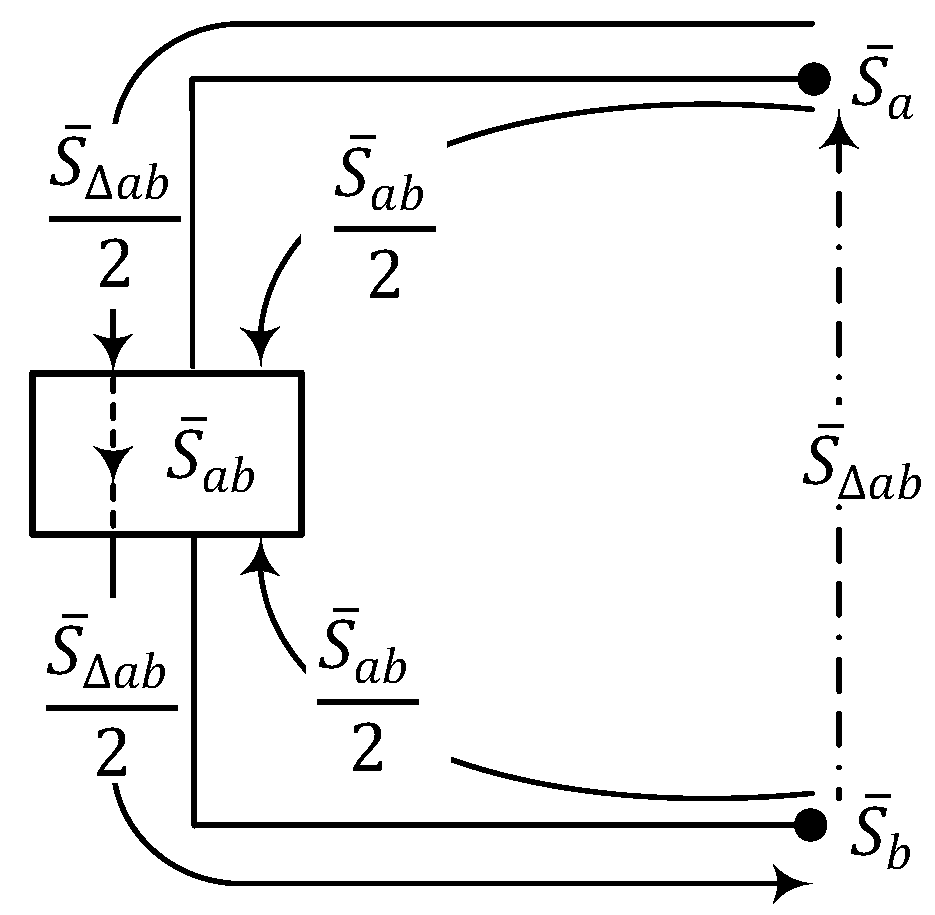
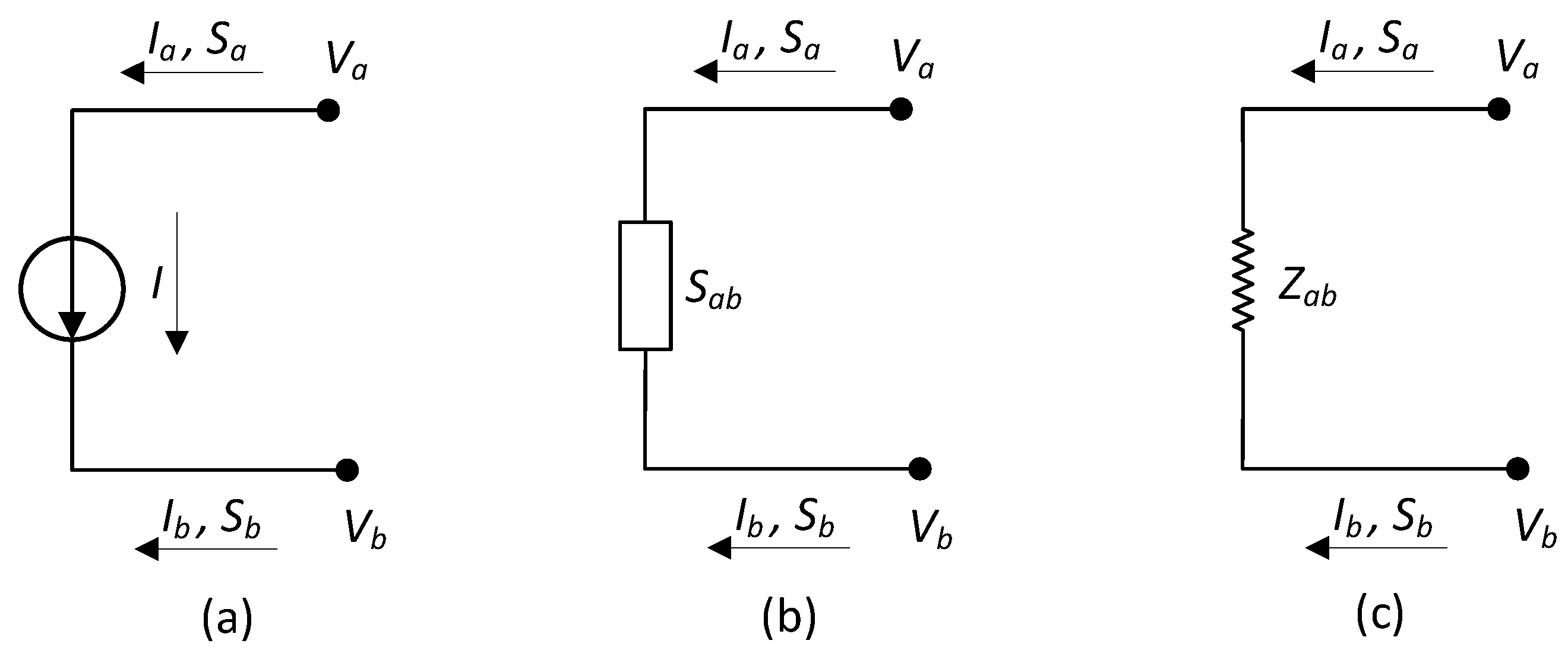
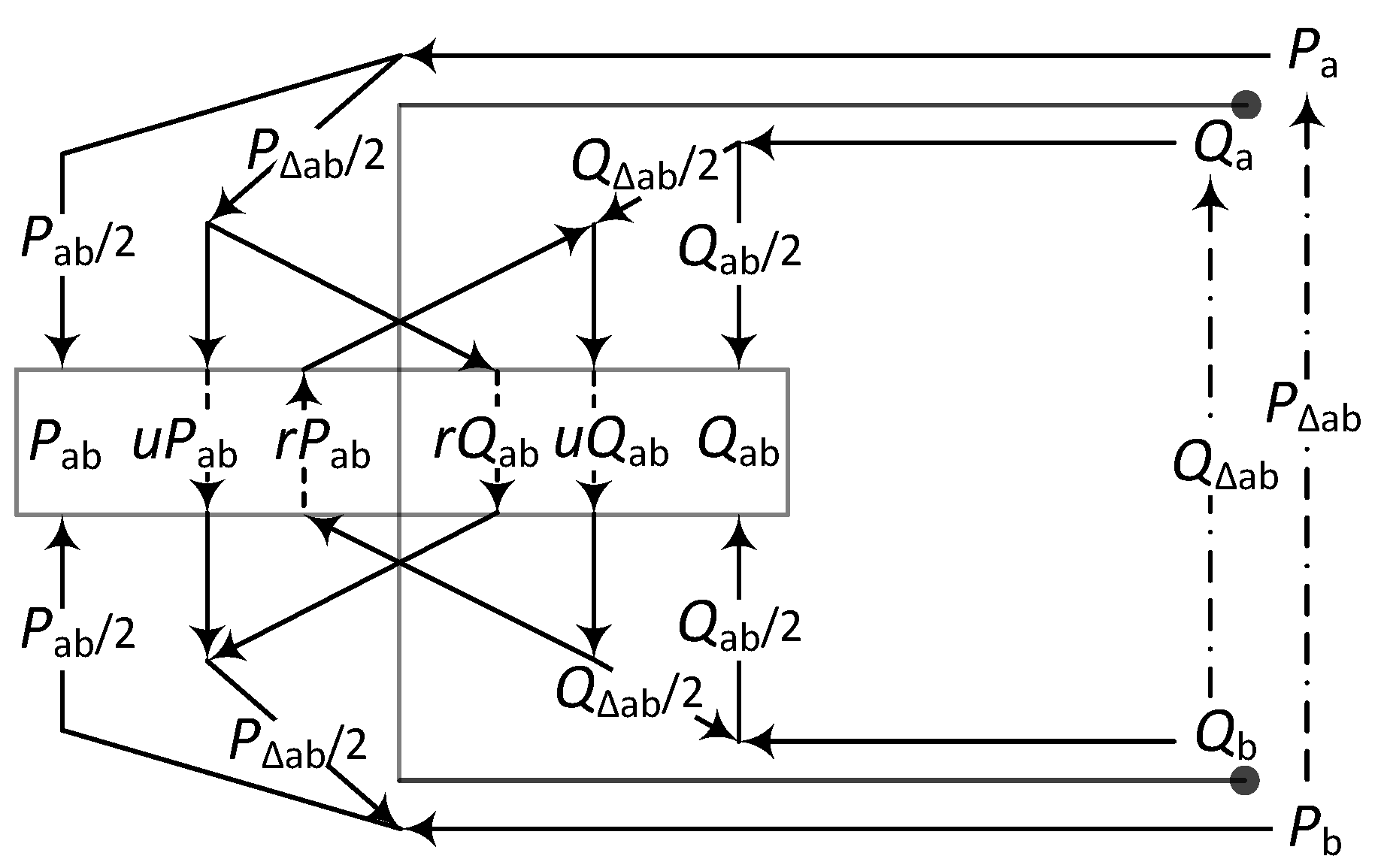




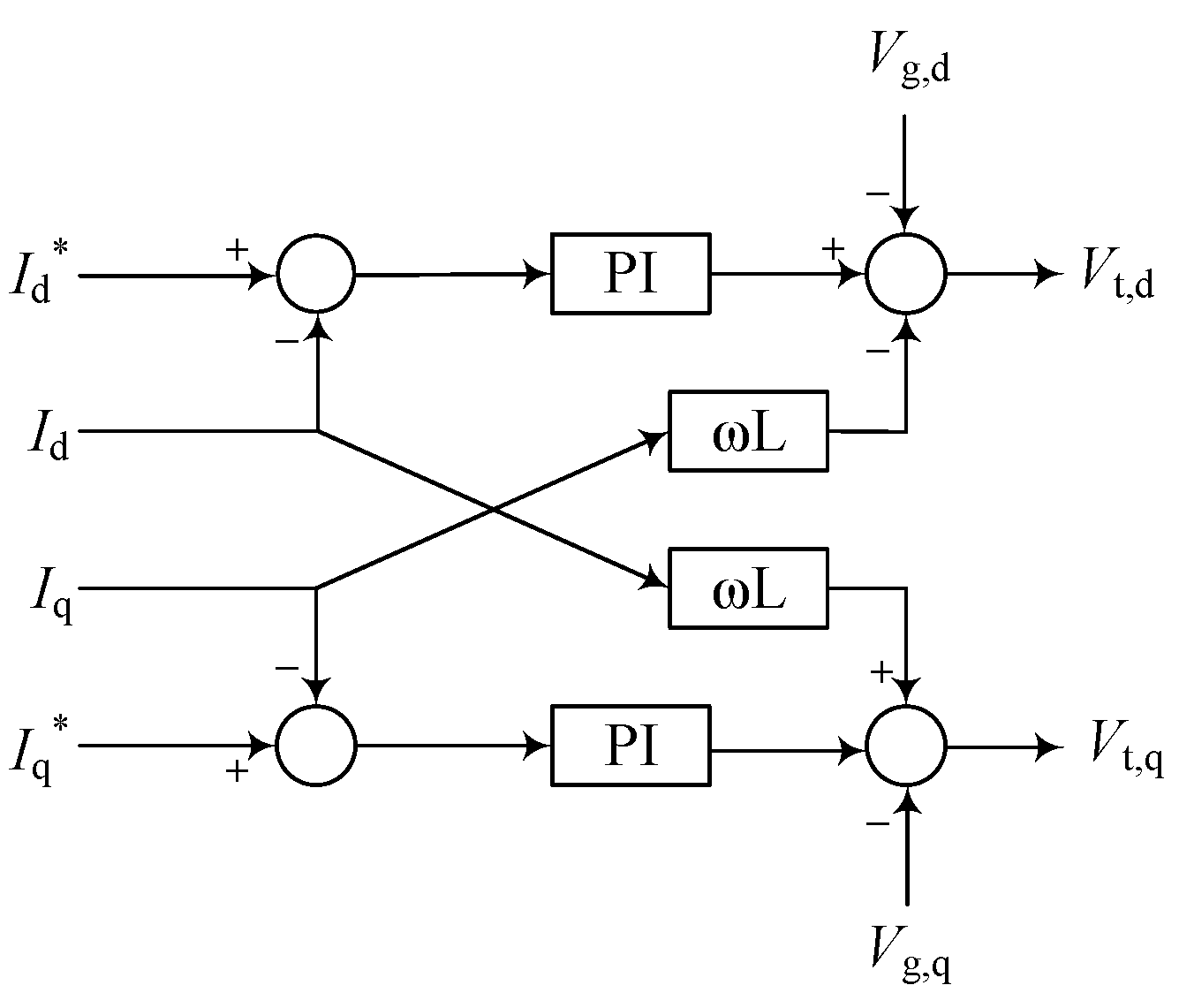

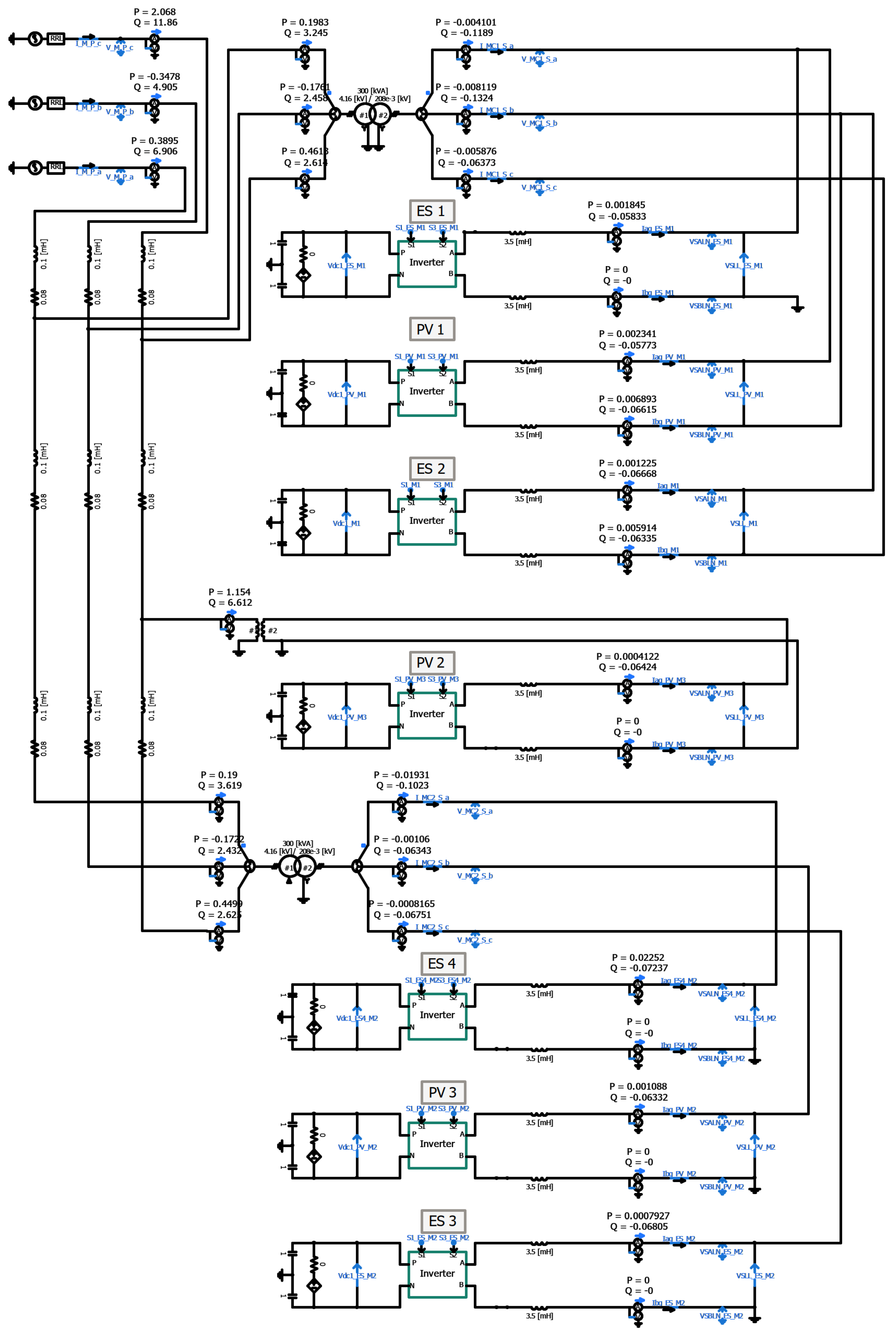
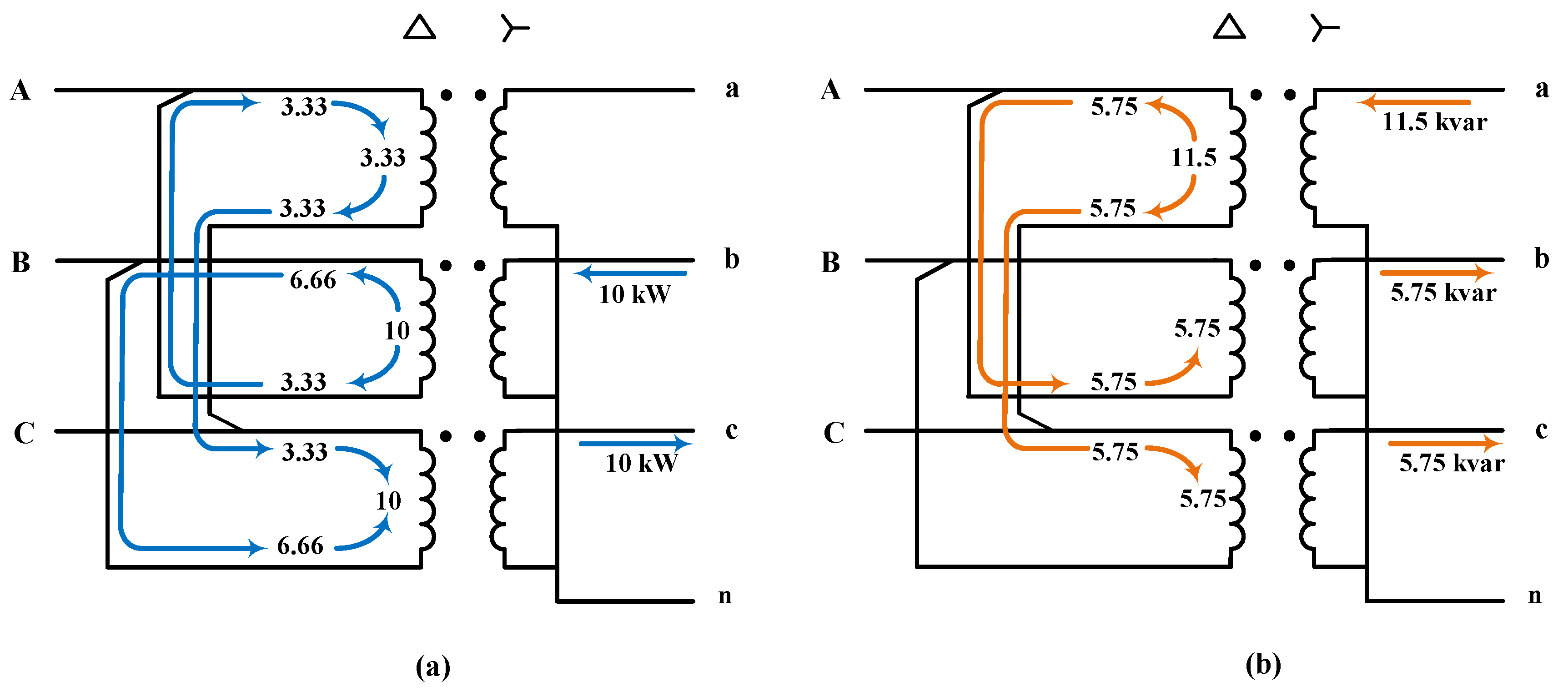







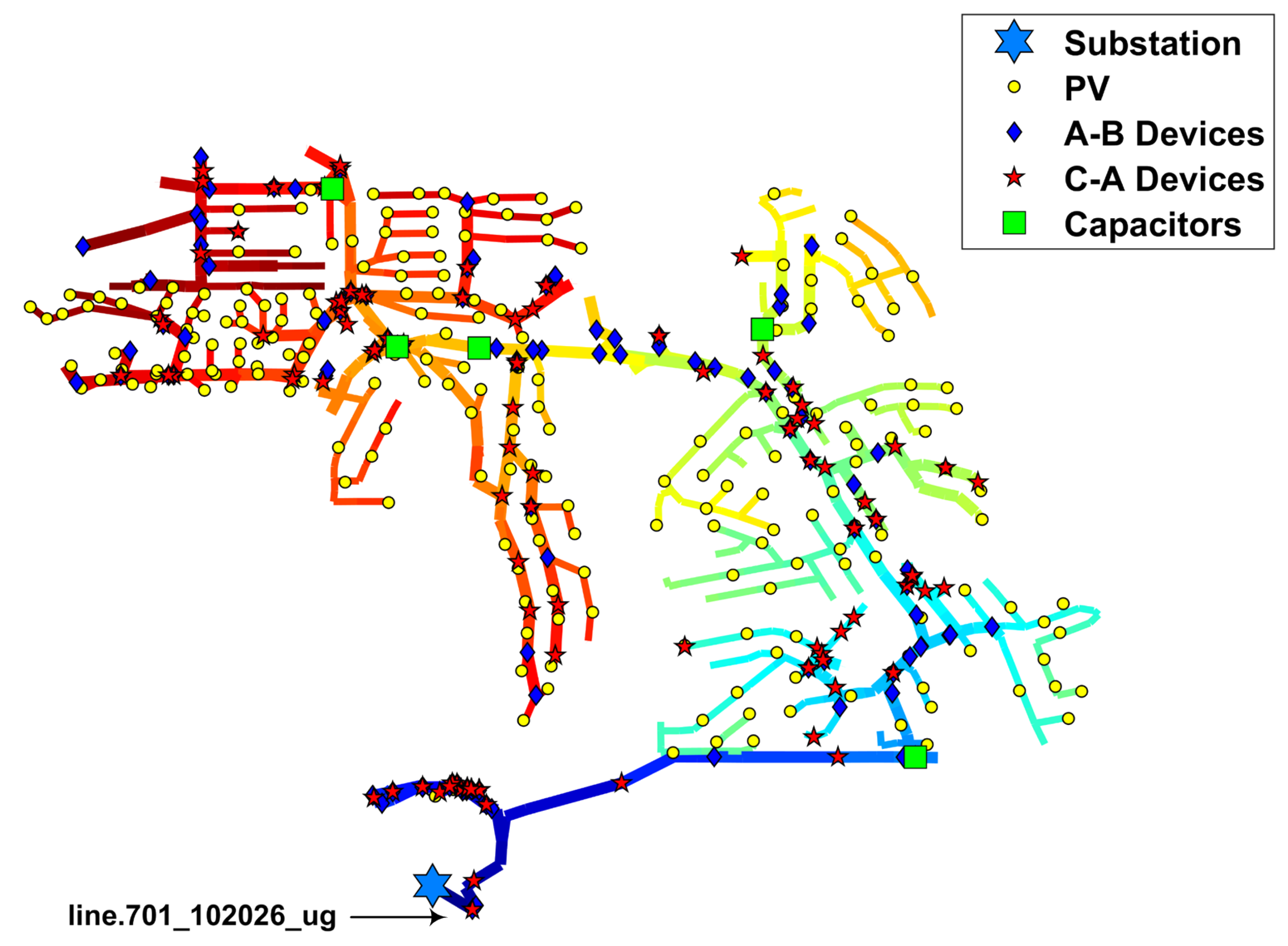

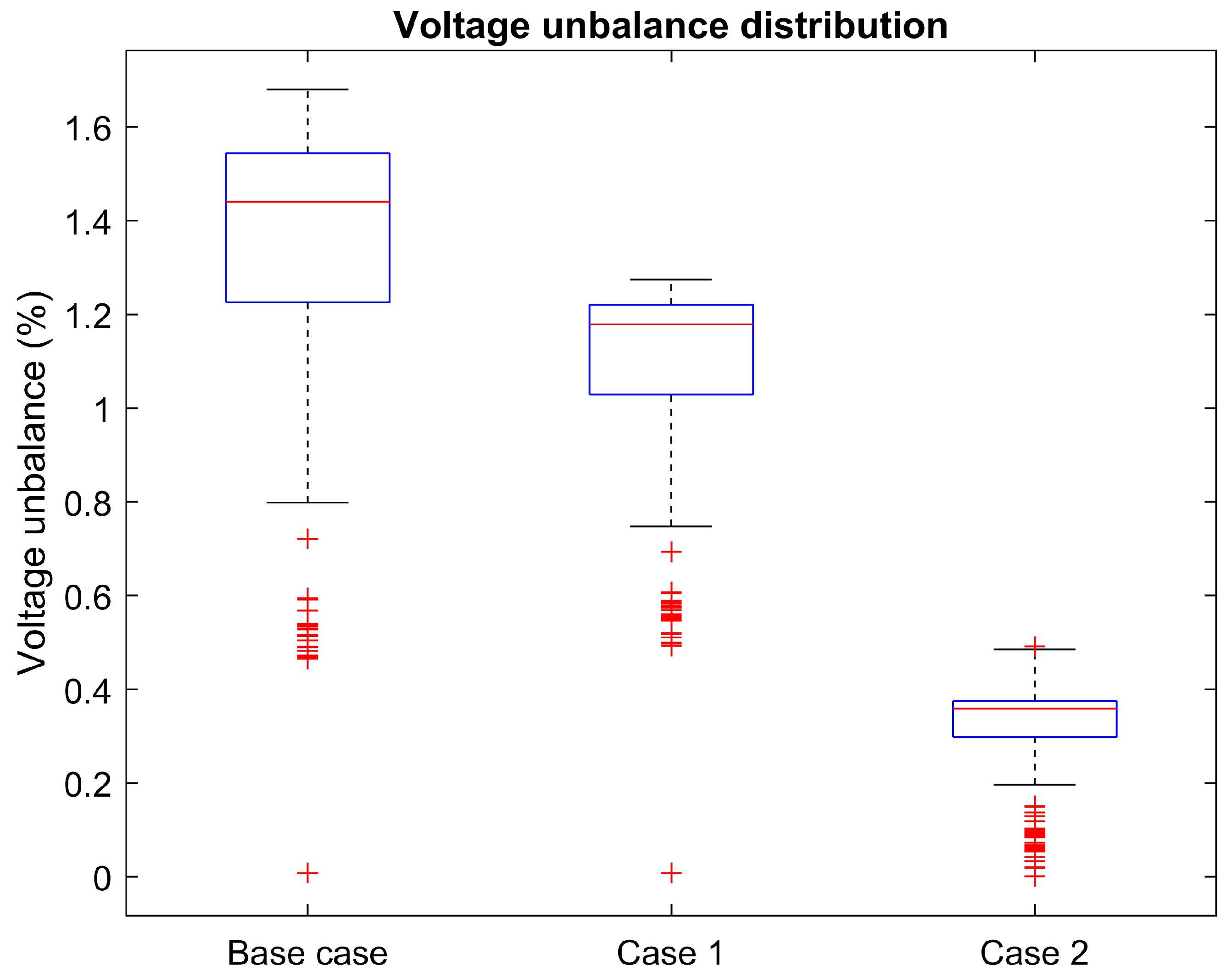
| Feeder Head Power | ||||||
|---|---|---|---|---|---|---|
| Scenarios | Active Power (kW) | Reactive Power (kvar) | ||||
| Pa | Pb | Pc | Qa | Qb | Qc | |
| Base case | 953.4 | 2369.8 | 2572.6 | 692 | 1104.5 | 1152.6 |
| Case 1 | 1988.7 | 1906.1 | 1926.3 | 366 | 1767.3 | −32.1 |
| Case 2 | 1980 | 1944.9 | 1955.2 | −11.2 | −90.7 | −9.8 |
Publisher’s Note: MDPI stays neutral with regard to jurisdictional claims in published maps and institutional affiliations. |
© 2021 by the authors. Licensee MDPI, Basel, Switzerland. This article is an open access article distributed under the terms and conditions of the Creative Commons Attribution (CC BY) license (http://creativecommons.org/licenses/by/4.0/).
Share and Cite
Siratarnsophon, P.; Cunha, V.C.; Barry, N.G.; Santoso, S. Interphase Power Flow Control via Single-Phase Elements in Distribution Systems. Clean Technol. 2021, 3, 37-58. https://doi.org/10.3390/cleantechnol3010003
Siratarnsophon P, Cunha VC, Barry NG, Santoso S. Interphase Power Flow Control via Single-Phase Elements in Distribution Systems. Clean Technologies. 2021; 3(1):37-58. https://doi.org/10.3390/cleantechnol3010003
Chicago/Turabian StyleSiratarnsophon, Piyapath, Vinicius C. Cunha, Nicholas G. Barry, and Surya Santoso. 2021. "Interphase Power Flow Control via Single-Phase Elements in Distribution Systems" Clean Technologies 3, no. 1: 37-58. https://doi.org/10.3390/cleantechnol3010003





